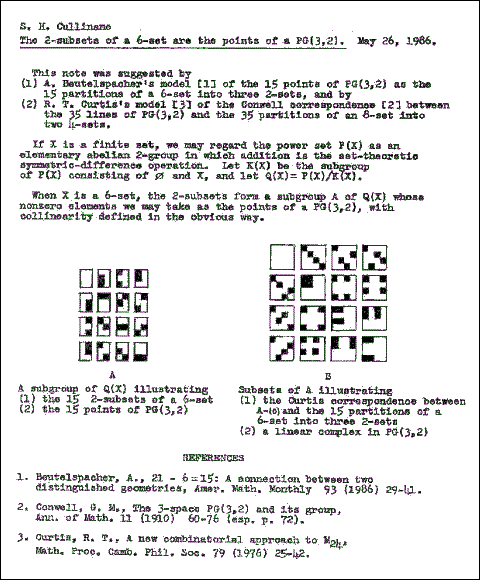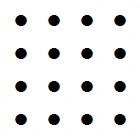The term "parametrization," as discussed in Wikipedia,
seems useful for describing labelings that are not, at least
at first glance, of a vector-space nature.
Examples: The labelings of a 4×4 array by a blank space
plus the 15 two-subsets of a six-set (Hudson, 1905) or by a
blank plus the 5 elements and the 10 two-subsets of a five-set
(derived in 2014 from a 1906 page by Whitehead), or by
a blank plus the 15 line diagrams of the diamond theorem.
Thus "parametrization" is apparently more general than
the word "coodinatization" used by Hermann Weyl —
“This is the relativity problem: to fix objectively
a class of equivalent coordinatizations and to
ascertain the group of transformations S
mediating between them.”
— Hermann Weyl, The Classical Groups ,
Princeton University Press, 1946, p. 16
Note, however, that Weyl's definition of "coordinatization"
is not limited to vector-space coordinates. He describes it
as simply a mapping to a set of reproducible symbols .
(But Weyl does imply that these symbols should, like vector-space
coordinates, admit a group of transformations among themselves
that can be used to describe transformations of the point-space
being coordinatized.)
















 .
.


